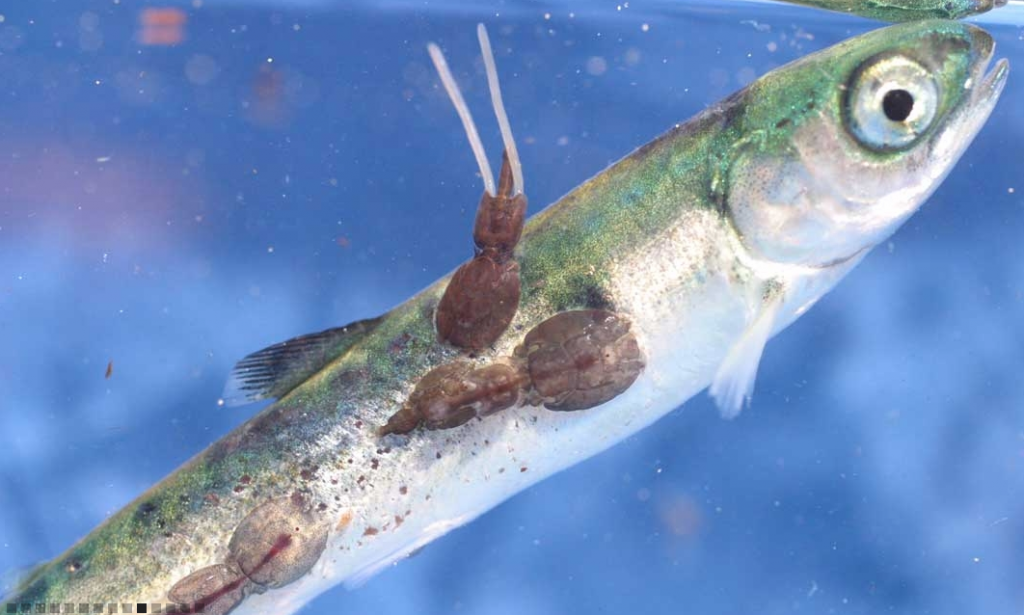Sea Lice
Lepeophtheirus salmonis – A harmless parasite turns dangerous
Everywhere there are salmon farms globally, there are epidemic outbreaks of sea lice.
Sea Lice Threats
- Salmon farms allow sea lice to breed rapidly, releasing billions of larval lice into wild salmon habitat.
- While sea lice are natural and are benign to adult salmon, they can kill young salmon when there are too many of them. The smaller the fish, the fewer lice it can tolerate.
- Research has shown that the massive release of sea lice from salmon farms is harmful to wild salmon and can drive populations towards extinction.
- While sea lice on farm salmon can be controlled with drugs, the lice become resistant to each drug used to control them.
- Delousing drugs drift beyond the pens, threatening crustaceans. In 2013, a New Brunswick aquaculture company was fined $500-thousand for resorting to an illegal de-lousing drug after everything else failed. The treatment killed hundreds of lobsters in the Bay of Fundy. The Norwegian industry is now moving to closed containers to get away from sea lice.
A natural cycle of protection broken
Sea lice are the second greatest cause of economic loss for salmon farmers. Yet before fish farms existed, lice never posed a threat to wild salmon. Why?
- Wild salmon naturally become infected with sea lice in the open ocean. As they swim upriver on their journey to spawn, the lice are killed off by the freshwater.
- In the spring, juvenile salmon make their journey from river to sea, lice-free, until they mix with mature salmon in the open Pacific. By the time they reach open water, they are old enough to tolerate sea lice.
Salmon farms have dramatically altered where sea lice accumulate in the environment.
- As wild adult salmon pass fish farms on their return to the rivers, they shed lice which infect the penned farm salmon.
- All the lice on the wild salmon die off over the winter, but find hosts easily in the crowded pens. They hatch new generations every few weeks, increasing their population exponentially.
- By spring, farm salmon are shedding billions of larval sea lice at each farm along the coast where there should be no lice. On their journey to the ocean, young wild salmon swimming through these plumes of lice are infected when they are too small. Sea lice infection either kills young salmon, or weakens them and makes them easy prey.
Today, the salmon farming industry is trying new drugs in BC, including releasing hydrogen peroxide baths into the environment after ridding the farm salmon of lice. Concern exists that this will damage the fragile gills of the much smaller wild salmon, herring and other species that are attracted to the farm salmon feed.
There is no solution anywhere in the world to eliminate the impact of sea lice from salmon farms on wild fish.

